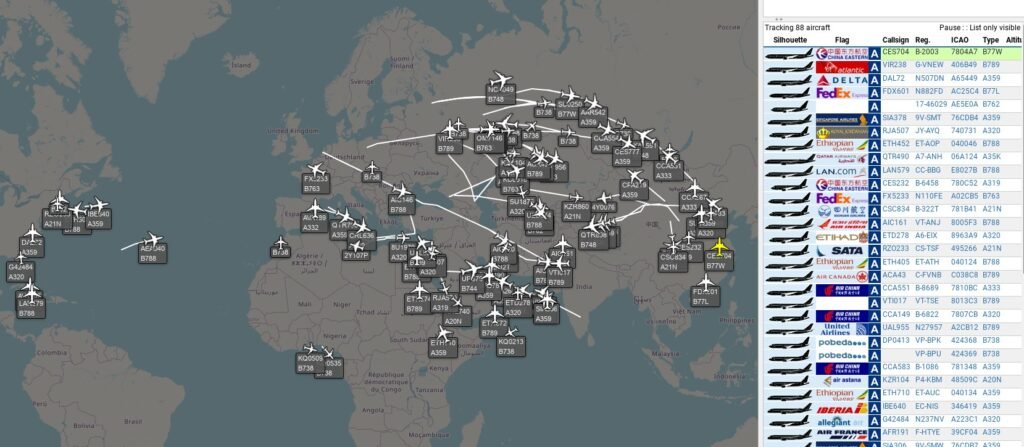Thank you to Tomasz Lemiech for writing in and sharing with us the release of his new software "dumphfdl". Tomasz is the author of dumpvdl2 and also maintains RTLSDR-Airband. Regarding dumphfdl Tomasz writes:
dumphfdl is a multichannel HFDL decoder for Linux. HFDL (High Frequency Data Link) is a protocol used for radio communications between aircraft and a network of ground stations using high frequency (HF) radio waves. Thanks to the ability of short waves to propagate over long distances, HFDL is particularly useful in remote areas (eg. over oceans or polar regions) where other ground-based communications services are out of range. While many aircraft carriers prefer satellite communications these days, HFDL is still operational and in use.
Available HFDL decoding applications typically run on Windows and take an audio signal on input. The signal has to be delivered to the decoder via a physical cable from an external shortwave receiver or via a virtual cable from an SDR. This makes these apps inherently single-channel. This shortcoming does not apply to dumphfdl which interfaces directly with the SDR, so no pipes or virtual audio cables are needed. The program can decode multiple HFDL channels simultaneously, up to available CPU power and SDR bandwidth (there is no fixed channel count limit).
dumphfdl uses SoapySDR library (https://github.com/pothosware/SoapySDR) to communicate with the radio. Any HF-capable receiver for which a SoapySDR driver exists, should work. I have tested it briefly with an RTL-SDR v3 dongle in direct sampling mode. While I had a bit of a success with it, HFDL signals are often quite weak, so a real HF radio (like SDRPlay RSP1A or Airspy HF+) gives much better results (more decoded messages).
The program may log decoded messages to a file or send them over the network for external processing and storage.
HFDL messages often contain diagnostic data accompanied with aircraft position information. The program may extract this data from decoded messages and provide a positional data feed for external plane tracking apps (eg. Virtual Radar Server). An example screenshot from VRS is attached - taken after about 2 hours of decoding eight HFDL channels spread across three HFDL subbands: 6.6, 8.9, and 10.0 MHz with two dumphfdl instances on two radios - RSP1A and Airspy HF+. Definitely a nice way to expand the coverage of a home ADS-B radar :-)
Refer to the README.md file in the project repository for more details. The program is still under development, so new features and further improvements might be expected in subsequent releases.

